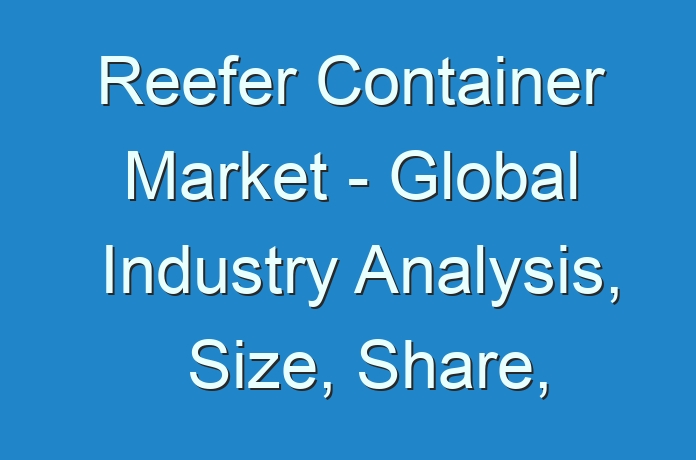
Reefer containers are refrigerated insulated containers used to ship temperature-controlled cargos such as fruits, fish, meat, vegetables, and dairy products. They are also used to ship inedible products such as flowers, pharmaceuticals, and chemicals. Some products need to be transported in chilled, frozen, or temperature-controlled containers. Reefer containers help transit such products without the risk of decay or spoilage. Reefer containers can keep products frozen at a temperature of even minus 60°C. Optimal humidity conditions are also ensured inside reefer containers through de-humidification systems. This enables flowers to stay fresh and bananas and other fruits do not turn brown even after being in transit for miles and over several days inside the reefers. Reefer containers can maintain and lower temperature in harsh and unsuitable conditions. These containers can help maintain temperature of 30°C for goods that need to be kept warm regardless of the temperature prevalent outside. However, reefer containers are not meant to lower the temperature of cargos, but maintain the pre-cooled cargo temperature. These containers are characterized by bottom air delivery units designed in a way that lets in chilled air through the floor of the reefer via a T-shaped decking. This, in turn, provides the advantage of producing consistent and uniform flow of cold air across the container, thereby ensuring suitable exchange of air in goods.
Want to know the obstructions to your company’s growth in future? Request a brochure @ https://www.transparencymarketresearch.com/sample/sample.php?flag=S&rep_id=18395
Innovative methods of shipment of cargos have replaced conventional methods. Conventional methods of transportation primarily include the transit of goods by roads, which takes long time. Goods may perish in such a method of transportation. Although navigation facilities are available, the absence of thermal insulated containers may damage edible and inedible products that need to be stored under controlled temperatures. Global cold chain has expanded significantly since the last few years due to the discovery of reefers, which help transit edible and inedible products easily in a stipulated duration without causing any damage. Increase in international trade and easy navigation facilities have also boosted the reefer container market. Of late, reefer containers have been replacing temporary warehouses, as the former lower packaging and labor costs. Low transportation costs, fast and easy transshipment of goods, and low terminal turnaround times are driving the reefer container market. Protection from theft and spoilage are also responsible for the increase in usage of reefer containers.
Lack of availability of the appropriate reefer container is one of the major challenges facing the reefer container market since utilization of the latest cooling technology is vital. Transportation costs and freight charges have decreased substantially.
However, significant investment in terms of fixed capital expenditure is needed in arranging and maintaining reefer containers. This is another factor that hampers the reefer container market. Ports also need to be spacious in order to accommodate large containers; thus, occupancy becomes a challenge. Allowing trade of cargos in reefer containers also increases the incidences of illicit trade, as contents are unknown.
The reefer container market can be segmented based on the types of products transported and geography. Food products and non-food products that can be further segmented into liquid items, pharmaceuticals, and chemicals are the types of products or cargos transported in reefer containers.
Purchase Premium Research Report @ https://www.transparencymarketresearch.com/checkout.php?rep_id=18395<ype=S
Based on geography, the reefer container market can be segmented into North America, Europe, Asia Pacific (APAC), Middle East & Africa, and Latin America. Of these, APAC and North America are the leading markets. Both these regions are technologically advanced and have some of the key manufacturers of reefer containers. These regions are also known to engage in extensive overseas trade across the globe.
Key players operating in the reefer container market are Daikin (Japan), Klinge Corporation (the U.S.), Singamas (China), Fortune Container Trading (HK) Limited (China), and Global Sea Containers Limited (the U.S.). These companies are leading in terms of manufacture of reefer containers. Major vendors operating in the market include Maersk Line (Denmark), MSC (Switzerland), and NYK Line (Japan).
Read Our Trending Press Release Below: https://www.prnewswire.co.uk/news-releases/industry-players-in-automotive-drive-shaft-market-to-capitalize-on-rise-in-sales-of-utility-vehicles-valuation-to-reach-us-21-bn-by-2027-tmr-856566581.html





